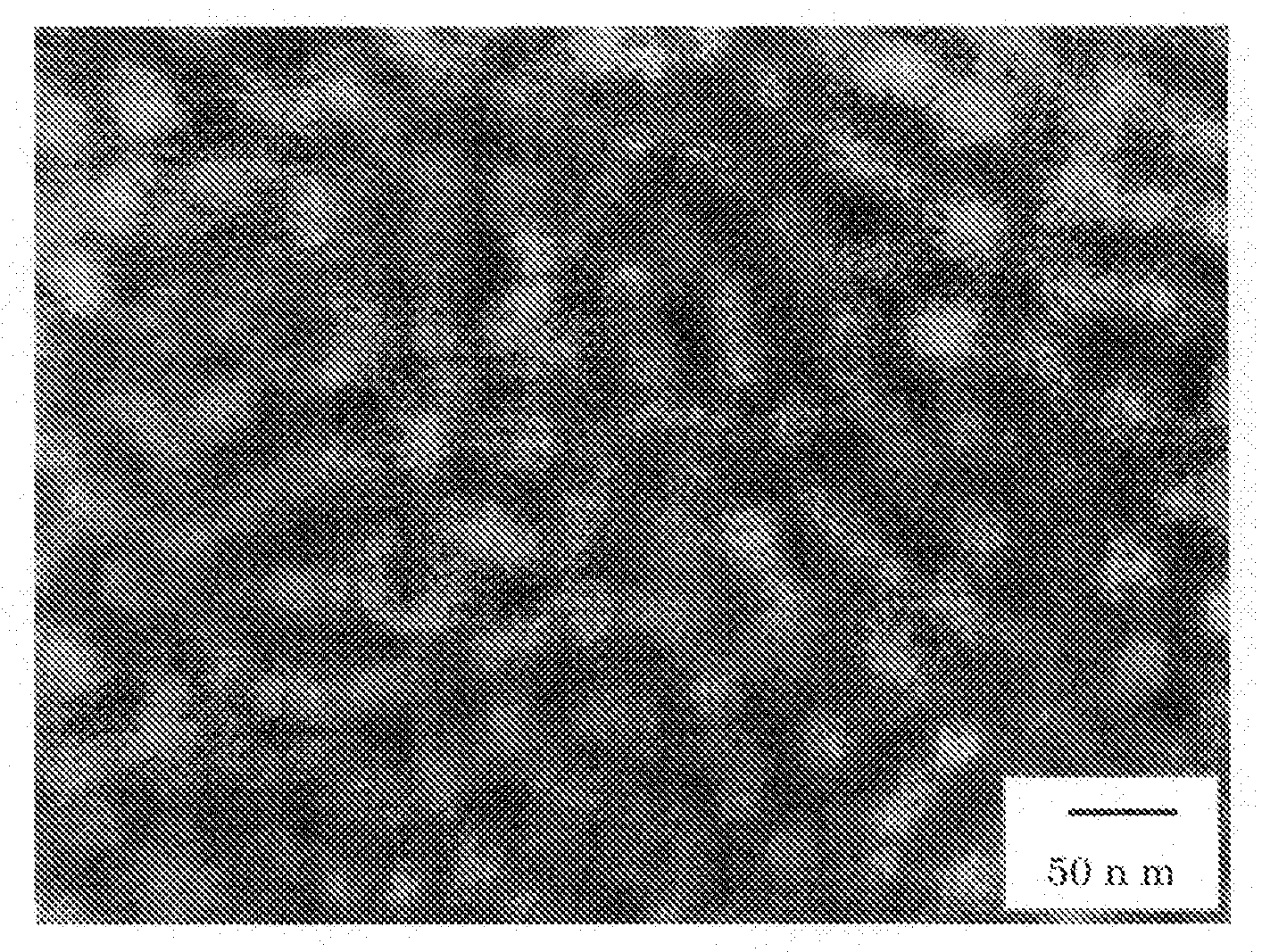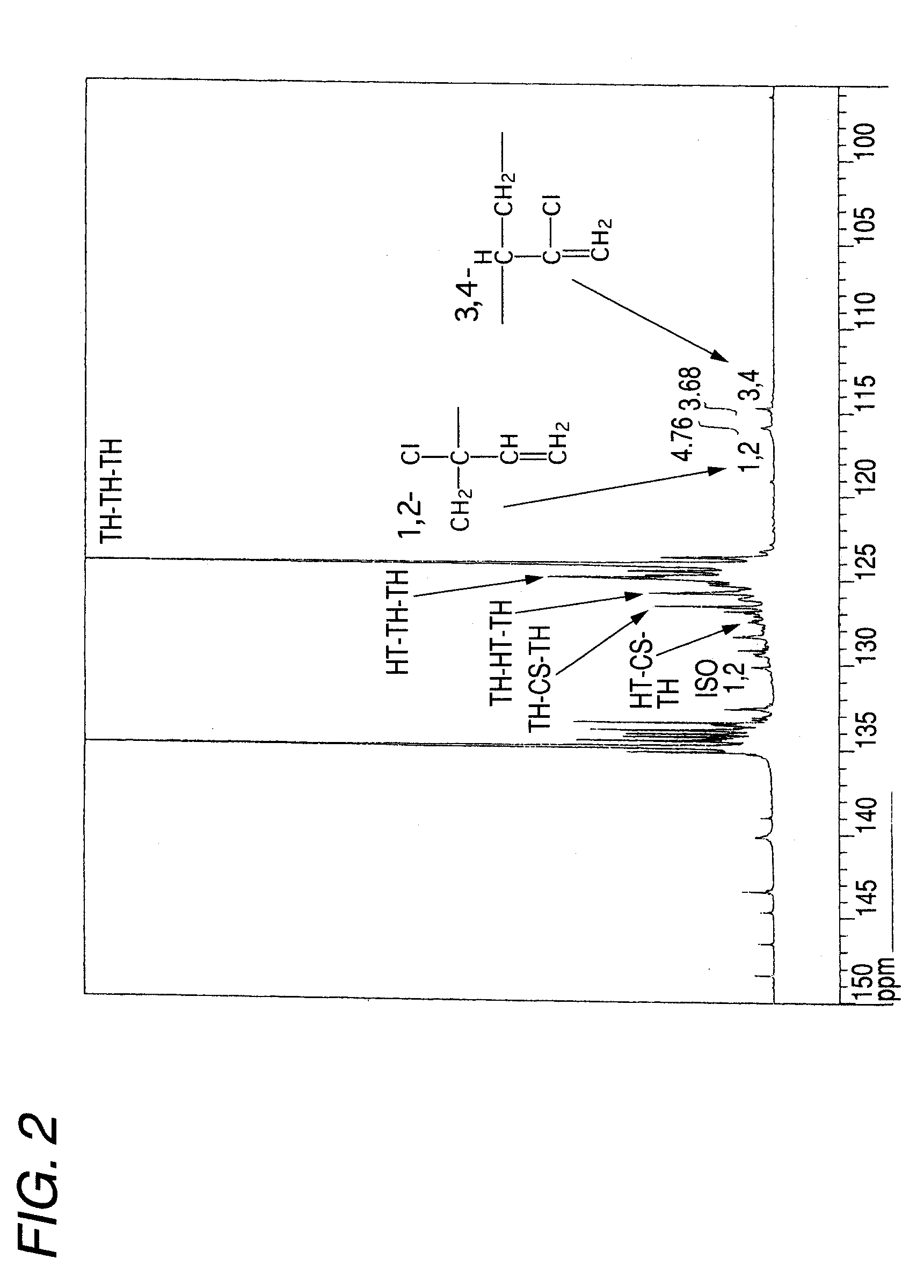Chloroprene-based block copolymer, soapless polychloroprene-based latex, and processes for producing the same
a technology of soapless polychloroprene and soap-free blocks, applied in the direction of chloroprene adhesives, adhesive types, graft polymer adhesives, etc., can solve the problems of high adhesiveness the opposite of extremely high-polarity materials such as vinyl chloride-based resins, and the main adhesive strength of conventional cr adhesives. achieve the effect of improving adhesiveness, improving adhesiveness and water resistan
- Summary
- Abstract
- Description
- Claims
- Application Information
AI Technical Summary
Benefits of technology
Problems solved by technology
Method used
Image
Examples
synthetic example 1
[0102]Into a 200 ml Pyrex (registered trademark) glass flask fitted with a nitrogen gas-inlet tube were charged 0.30 g of a carbamate ester represented by the following formula (7), 30.0 g of styrene, 4.0 g of acrylonitrile, and 20.0 g of methyl ethyl ketone, followed by thorough degassing by repeating operations of freeze-pump-thaw cycle three times. Thereafter, polymerization was carried out under stirring under a nitrogen atmosphere for 20 hours under irradiation with ultraviolet rays (UM452 (450W) manufactured by Ushio Inc.) at a distance of 80 mm in a constant-temperature bath of 30° C. The conversion rates of the polymerization of styrene and acrylonitrile at this moment were 30% and 57%, respectively. The content was poured into a large amount of methanol to precipitate a polystyrene / acrylonitrile copolymer, thereby a polymer (A) being obtained. The number-average molecular weight Mn was 14,600, the weight-average molecular weight Mw was 29,100, and the molecular weight distr...
synthetic example 2
[0103]Into a 200 ml Pyrex (registered trademark) glass flask fitted with a nitrogen gas-inlet tube were charged 0.30 g of a carbamate ester represented by the following formula (7), 0.14 g of a carbamate disulfide, 30.0 g of styrene, 5.0 g of acrylonitrile, and 20.0 g of methyl ethyl ketone, followed by thorough degassing by repeating operations of freeze-pump-thaw cycle three times. Thereafter, polymerization was carried out under stirring under a nitrogen atmosphere for 20 hours under irradiation with ultraviolet rays (UM452 (450W) manufactured by Ushio Inc.) at a distance of 80 mm in a constant-temperature bath of 30° C. The conversion rates of the polymerization of styrene and acrylonitrile at this moment were 29% and 56%, respectively. The content was poured into a large amount of methanol to precipitate a polystyrene / acrylonitrile copolymer, thereby a polymer (A) being obtained. The number-average molecular weight Mn was 13,100, the weight-average molecular weight Mw was 25,90...
synthetic example 3
[0104]Polymerization was initiated under the same conditions as in Synthetic Example 2 except that 50.0 g of methyl methacrylate is used instead of acrylonitrile and no solvent was used in Synthetic Example 2. After irradiation with ultraviolet rays for 10 hours, the conversion rate of polymerization of methyl methacrylate was 24%. The content was poured into a large amount of methanol to precipitate polymethyl methacrylate, thereby a polymer (A) being obtained. The number-average molecular weight Mn was 13,500, the weight-average molecular weight Mw was 24,900, and the molecular weight distribution Mw / Mn was 1.84, which were measured by GPC. The sulfur content in the polymer was 0.63 wt %.
PUM
| Property | Measurement | Unit |
|---|---|---|
| Temperature | aaaaa | aaaaa |
| Percent by mole | aaaaa | aaaaa |
| Fraction | aaaaa | aaaaa |
Abstract
Description
Claims
Application Information
 Login to View More
Login to View More - R&D
- Intellectual Property
- Life Sciences
- Materials
- Tech Scout
- Unparalleled Data Quality
- Higher Quality Content
- 60% Fewer Hallucinations
Browse by: Latest US Patents, China's latest patents, Technical Efficacy Thesaurus, Application Domain, Technology Topic, Popular Technical Reports.
© 2025 PatSnap. All rights reserved.Legal|Privacy policy|Modern Slavery Act Transparency Statement|Sitemap|About US| Contact US: help@patsnap.com



